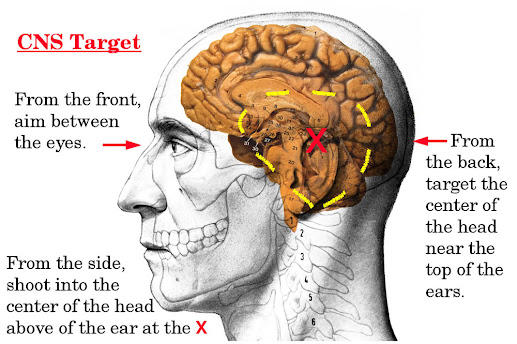(Almost) Silent Walking...
It's not complex, and it does work if you find yourself needing to traverse an area that provides a good amount of concealment, like woods or forests, or even well-treed suburban areas. It's a given that silence is essential to your survival, and the urge to move with speed can kill you by getting you spotted by a bad guy, (the human eye is attracted to movement - the faster, the more quickly spotted), you may want to consider the following methods of stepping and moving:
- Walk slowly; only a few steps at a time. Then stop, look, and listen for a few seconds. Emulate the deer - it moves a few feet...stops...listens...looks around...and then moves on. Before you put your foot down, look at where you're going to step, and if you foot will make a lot of noise due to debris, don't step there! Find another close by spot, or go around that small area. Many is the time on a patrol that I've made 'mini-button hooks' for lack of a better term, to avoid making noise. If you're not on concrete or asphalt, if you can help it, don't put your heel down first like you're walking through your local city or neighborhood. Anything under your foot will snap, crackle, or pop, giving your precise location away from anyone listening. And sound travels, especially at night. Putting your heel down first then following with the rest of your foot causes you to shift your body weight forward and your foot comes down with a lot of force, so much so that good sized, dry branches will crack loud and clear as you step on them. Leaves will crunch, paper will rustle, and you are now providing a sound signature and direction of travel.
- A Better (but not perfect) Heel First Technique: You can modify your step by lightly setting your heel down, almost parallel with the ground, and then rolling your foot down from the outside from the heel to the tip of your boot, with your little toe making contact before the ball of your foot and your big toe while feeling for anything that might break and make a lot of noise. If you feel something, look down...if you can see what it is, move your foot away from the noise maker, and continue on.
- The Toe First Technique: Lightly slide the toe of your boot into the ground cover/debris while feeling for an obstacle free place, and then lower your foot from front to back while feeling for sticks and other things that will crunch (this is especially effective in 'leaf down' environments when there's a 'hard frost'). You can use your toe to move the offending piece of flora/fauna away.




My father called that last one fox step or fox walking and would exercise to keep in practice by standing with his toes on a stair and doing essentially "lifts and dips" with just his toes and maybe the balls of his feet supported.
ReplyDelete